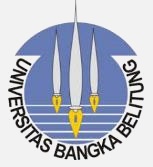THE PEATLAND RESTORATION AGENCY’S ECONOMIC REVITALIZATION PROGRAM IN ACHIEVING THE TRANSBOUNDARY HAZE-FREE ASEAN 2020 IN RIAU PROVINCE
Abstract
This study analyses the implementation of good governance principles for the economic revitalization program under the supervision of Riau Province’s Badan Restorasi Gambut (Peatland Restoration Agency). One of the aims of this program is to support the haze-free ASEAN 2020 roadmap. Riau province is an area prone to forest fire disasters. Its peatland area, which is larger than Malaysia’s total peatlands, have a very high potential for damage due to forest fires. To mitigate the damages, BRG initiated the 3R program: Rewetting, Revegetation, and Revitalization. What makes this topic interesting is BRG emphasizes the aspects of economic empowerment of local communities to prevent further forest and peatland damages. To assess the implementation of BRG’s program, our research team conducted several interviews with representatives from Indonesia’s Ministry of Environment and Forestry, NGOs, academics, farmers, and villages’ facilitators who assisted local communities that received the BRG’s assistance packages. Our study shows that BRG’s economic revitalization program had succeeded in creating small scale economic activities such as honey industry, pineapple farming, and catfish farming. However, the ineffective coordination and communication between BRG and the local communities had prevented them from constructing an effective method to prevent future forest fires.
Downloads
References
ASEAN. (2018, February 4). About ASEAN Cooperation on Transboundary Haze Pollution Control. ASEAN Cooperation on Environment. https://environment.asean.org/about-asean-cooperation-on-transboundary-haze-pollution-control/
BBC. (2013, June 21). Singapore haze hits record high from Indonesia fires—BBC News. https://www.bbc.com/news/world-asia-22998592
Björk, P. G., & Johansson, H. (2001). Towards governance theory: In search for a common ground. IPSA Papers.
BRG. (n.d.). Strategi 3R dalam Upaya Restorasi Gambut – BRGM Indonesia. Retrieved October 24, 2021, from https://brg.go.id/strategi-3r-dalam-upaya-restorasi-gambut/
CIFOR. (n.d.). Global Wetlands. Retrieved October 24, 2021, from https://www2.cifor.org/global-wetlands/
Gisselquist, R. M. (2012). Good governance as a concept, and why this matters for development policy. WIDER Working Paper.
Grindle, M. S. (2004). Good enough governance: Poverty reduction and reform in developing countries. Governance, 17(4), 525–548.
Harrison, G. (2005). The World Bank, governance and theories of political action in Africa. The British Journal of Politics and International Relations, 7(2), 240–260.
KLHK. (n.d.). SiPongi—Karhutla Monitoring Sistem. Retrieved October 24, 2021, from http://sipongi.menlhk.go.id/home/main
Maharani, E. (2013, June 24). Presiden Minta Maaf ke Singapura dan Malaysia, Menteri Telan Ludah | Republika Online. Republika. https://www.republika.co.id/berita/nasional/umum/13/06/24/mowl7o-presiden-minta-maaf-ke-singapura-dan-malaysia-menteri-telan-ludah
Moloney, K. (2009). Public administration and governance: A sector-level analysis of World Bank aid. International Review of Administrative Sciences, 75(4), 609–627.
Nanda, V. P. (2006). The “good governance” concept revisited. The ANNALS of the American Academy of Political and Social Science, 603(1), 269–283.
Osmani, S. (2007). Participatory governance for efficiency and equity: An overview of issues and evidence. Background Paper Prepared for the World Public Sector Report.
Rotberg, R. I. (2004). Strengthening governance: Ranking countries would help. The Washington Quarterly, 28(1), 71–81.
Rothstein, B., & Teorell, J. (2008). What Is Quality of Government? A Theory of Impartial Government Institutions. Governance, 21, 165–190.
Sheng, Y. K. (n.d.). What is Good Governance. UNESCAP. https://www.unescap.org/sites/default/files/good-governance.pdf
Varkkey, H. (2014). Regional cooperation, patronage and the ASEAN Agreement on transboundary haze pollution | SpringerLink. International Environmental Agreemts: Politics, Law and Economics, 14, 65–81.
Varkkey, H. (2017). “In 3 Years We Would Have Solved This”: Jokowi, ASEAN and Transboundary Haze. Jurnal Studi Pemerintahan, 8(3), 277–295.
Copyright (c) 2021 Owned by the Author(s), published by Berumpun: International Journal of Social, Politics and Humanities

This work is licensed under a Creative Commons Attribution 4.0 International License.









